Your Survival Guide For Rainy Runs
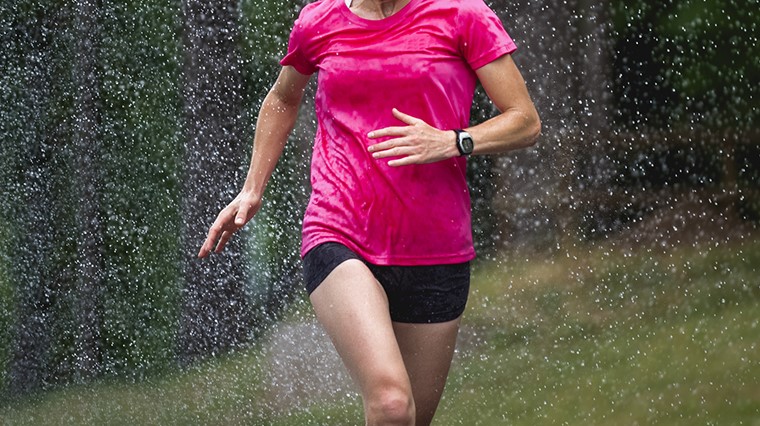
If you’re a runner, no doubt you might go a little batty after being cooped up indoors during a weeks long autumn rain. But running in the rain isn’t as bad for you as you thought.
In fact, we’ve already covered rainy day running shoes and clothing tips. Today we’re going to focus specifically on how to run in the rain including rainy run prep and protecting your gear, running technique and recovery – both for your body and your shoes.
Apply anti-chafe cream
When it comes to chafing (and everything else!) prevention is better than cure. Alike with sweat, rain water causes increased friction against your skin and will aggravate chafing.
It’s worth gliding an anti-chafe cream or gel onto your sensitive bits like inner thighs and blister-prone areas between your toes, particularly on longer runs where you may get drenched.
The old school, cheapie way to do this is petroleum jelly, but it tends to make a goopy mess of your clothes. There’s stacks of less greasy, sports-specific skin care products like Gurney Goo to support the modern runner.
Warm up indoors
Warming up is a key aspect of a well-planned workout - it literally allows your muscles to warm up and limber up to transition from a resting state to an active state smoothly and without injury.
Warming up indoors allows you to ‘wake up’ tight and cold muscles gradually and provides protection from the elements until they are prepped to handle the cold - just think, your car doesn’t love starting up immediately in cold temperatures and neither does your body.
Perform dynamic 'active' stretches indoors for about 10 mins pre-run like jumping jacks, jogging on the spot and leg swings/kicks. This will elevate your heart rate and make your muscles more flexible and responsive to avoid a “cold start” on your rainy day runs.
Find a waterproof home for your phone
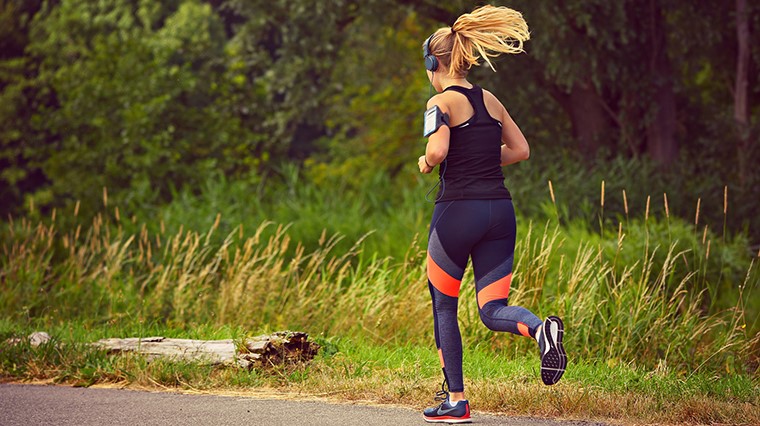
For safety reasons a phone is recommended on any solo run but particularly in less-than-perfect conditions.
Strap your phone securely to your arm in a waterproof phone armband or tuck it away in a sealed, waterproof pocket on your rain running jacket to keep it dry.
If you’re popping your phone in a trail pack or running hip pack, a plastic zip-lock bag will help keep it dry if any water sneaks in – but just be sure to reuse it again and again to prevent wastage.
Adapt your running style
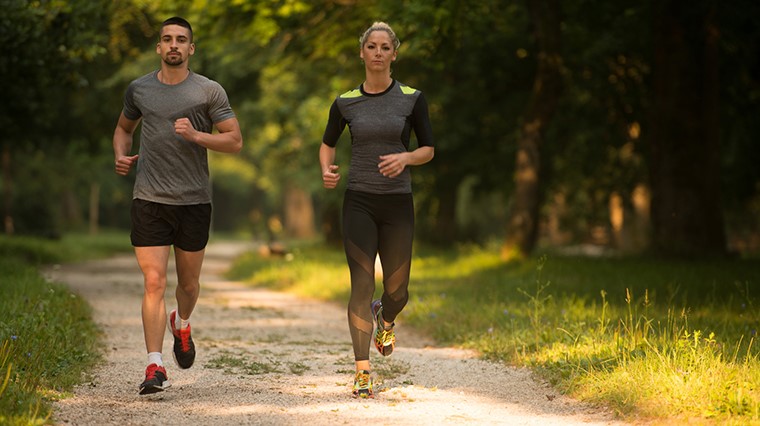
There’s tons of trail running tips that also apply to running in the rain or when conditions aren't ideal. Shorten your stride length so your steps are lighter and more controlled if you happen upon a slippery surface.
Stay observant - with rain there’s a higher slip and trip factor. Hazards, whether it's fallen branches or puddles to swallow up your running shoes present a real risk, so it’s important to mind your footing and be attentive.
Adjust your running route
Consider how the rain changes running surfaces – your local park that’s normally covered in a perfect blanket of grass will transform into a slushy mud pit in heavier rain, and natural trails can be even more challenging, making them best left to experienced trail runners.
Paved surfaces are a suitable alternative but be aware the road will become slicker when wet, increasing the time needed for vehicles to brake and limiting the visibility of drivers. Stay safe, wear reflective running accessories and run on paved footpaths where available.
Stick to flat running surfaces
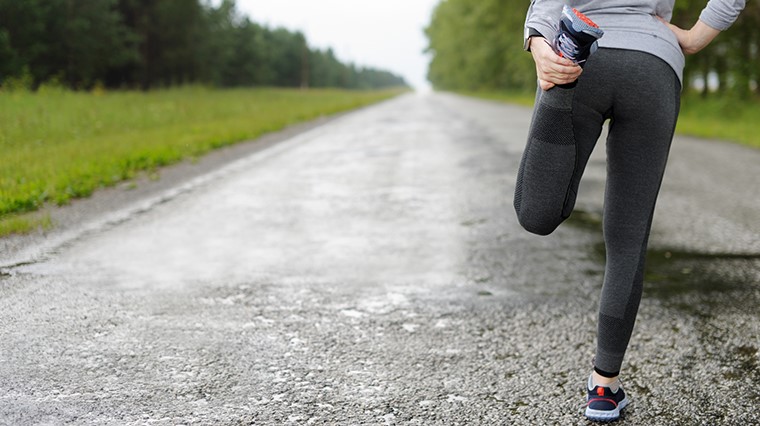
Although you may love the satisfaction of hill running on sunny days, if it's rainy out you’re better off sticking to flat running surfaces - just until the weather clears up.
The last thing you want is to slip-and-slide down an unforgiving hill on a rainy day and have a taste of the tarmac. You’ll be at even more risk if the tread of your running shoes is worse for wear.
Check your tread
Flip your running shoe upside-down and do an outsole check prior to hitting the pavement. A smooth, slick outsole rings alarm bells - a sign that your running shoes have been worn-down by use, the same way the tread on tyres wears out overtime, reducing wet grip.
Outsole grooves play an important function with their ability to channel water, allowing it to run in the ‘gaps’ beneath the shoe so the rubber itself remains in contact with the road to maintain traction.
Care for your running shoes (and they'll care for you)
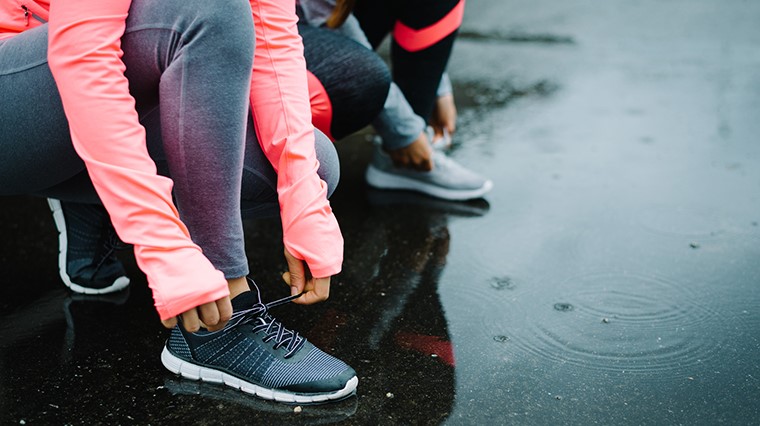
Apply a hydrophobic footwear spray to waterproof your running shoes - protecting them from the elements and helping keep your feet in dry, healthy conditions.
Whip off your running shoes as quick as you can once you’re indoors, and as tempting as it is to toss them in the washing machine and blast them with heat in the dryer – just don’t. Submerging them in water and applying direct heat can cause the adhesives or stitching bonding the shoes together to deteriorate.
Instead, remove the insoles and stuff scrunched up newspaper inside to pull moisture from the fabric. Alongside our tips on how to clean your dirty, smelly running shoes, this will help them retain structure, stay in (mostly) tip-top shape and reduce musty odours from moisture as they air dry.
Strip off
The moment you get the chance strip off, dry off and get into warm clothes as being wet will drop your body temperature, impairing your immune system and putting you at risk of hypothermia. It sounds like overkill, but hypothermia is a real risk, particularly on longer runs like rainy day marathons.
When possible take a warm bath or shower to clean off any mud and dirt you’ve picked up on your run. You may think you’re just adding wet to wet but the key word is warm, helping to return your body temperature to an optimal level.
Skip your run or stick to the treadmill when it’s stormy out

Lightning and high winds are clear signs that you should stick to indoor workouts and take the opportunity to cross train with dumbbell exercises, kettlebell training, yoga or other excuse-busting indoor workouts. Don't risk injury by battling a storm.
As fun it can be to run into the wind, it can also beat against your body and interfere with your proper running form. Heavy rain will slow you down and hinder performance, so if speedwork or setting a new PB is your goal, stick to the treadmill to avoid slip-and-sliding on slick roads.
Rainy day motivation

Even if there’s mud splattered up your leg and your goosebumps have goosebumps, you’ll feel awesome for having run in the rain like an unstoppable force.
Alike with trail running, rain running makes your regular routine a touch more extreme and has stacks of benefits. This includes activating more muscles and boosting coordination and balance as you stabilise yourself on slick roads.
It'll also provide stress relief beyond the confines of four walls and elevate your mental and physical toughness, so your sunny runs will be a cup of tea in comparison.
Be safe and happy running!
